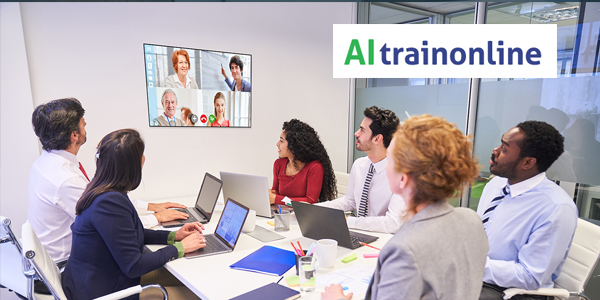 Get 50% off with the coupon code COUPON50
Get 50% off with the coupon code COUPON50Mastering AI Video Generation: Google VEO vs OpenAI Sora - Concepts, Comparisons & Creative Use Cases
The rise of generative video models is transforming how we produce, consume, and interact with visual content.
Duration: 1 Day
Hours: 3 Hours
Training: Live Training
Training Level: All Level
Wednesday, July 09, 2025
12:00 PM - 03:00 PM (Eastern Time)
Wednesday, August 06, 2025
12:00 PM - 03:00 PM (Eastern Time)
Wednesday, September 10, 2025
12:00 PM - 03:00 PM (Eastern Time)
About the Course:
This course dives deep into the two most powerful generative video models in the world today - Google VEO and OpenAI Sora. You’ll explore how they work, what differentiates them, how to craft effective prompts, and what business and creative opportunities they unlock.
Designed for learners who want to understand AI-powered video creation, this course simplifies complex underlying architectures, compares model capabilities, and provides hands-on use case simulations that demonstrate real-world value.
Course Objective:
By the end of this course, you will be able to:
- Understand the fundamental concepts behind generative video models
- Explain how Google VEO and OpenAI Sora differ in terms of architecture, capabilities, and output
- Identify appropriate use cases for each model (ads, storytelling, education, etc.)
- Craft effective prompts for high-quality video generation
- Understand the limitations, ethical issues, and deployment challenges
- Stay ahead with trends and the potential future of AI video generation
Who is the Target Audience?
This course is designed for:
- Content Creators & Marketers - looking to create AI-generated visual stories, ads, or product explainers
- AI Enthusiasts & Developers - who want to learn how cutting-edge video generation models work
- Educators & Trainers - to create interactive, AI-generated visual learning assets
- Game Designers & Filmmakers - interested in pre-visualization and AI-driven creative design
- Product Managers & Entrepreneurs - exploring video AI integration in their workflows or SaaS tools
Basic Knowledge:
- Basic understanding of Artificial Intelligence and Machine Learning concepts
- Familiarity with terms like text-to-image, diffusion models, or transformers (helpful but not mandatory)
- No coding knowledge is required, but a curiosity about AI creativity tools is a must
- Optional: Knowledge of tools like Midjourney, RunwayML, or D-ID will help learners appreciate how VEO/Sora compare
Curriculum
Total Duration: 3 Hours
Module 1: Introduction to AI Video Generation
- What is Generative Video AI?
- Evolution: From GANs to Diffusion to Sora/VEO
- Why it matters now: Video + AI Convergence
- Key Challenges in Video Generation: Temporal Coherence, Frame Quality, Resolution
Module 2: Deep Dive into OpenAI Sora
- What is Sora?
- Underlying Architecture (Transformers + Diffusion + Masked Modeling)
- Key Features
- Text-to-video
- Physics simulation
- Scene consistency
- 1080p video generation
- Examples of Prompts and Outputs
- Limitations & Known Constraints
- Use Cases (Entertainment, Storyboarding, Education)
Module 3: Deep Dive into Google VEO
- What is Google VEO?
- Architecture & Model Components (Imagen Video + Lumiere)
- Key Features
- Long-form video
- Cinematic quality
- Multiple input modalities (text, image, reference video)
- Example Prompts and Visual Outputs
- Limitations & Optimization Areas
- Use Cases (Ad creation, Film pre-visualization, Training videos)
Module 4: Sora vs VEO – Side-by-Side Comparison
- Quality & Fidelity (Resolution, Frame Rate, Scene Stability)
- Prompt Versatility & Input Modalities
- Rendering Time & Performance
- Output Duration and Realism
- Use Case Fit: Which to Use When?
- Current Availability (API/Closed Access?)
Module 5: How They Work – A Beginner-Friendly Explanation
- Diffusion Models: Simplified Explanation
- Temporal Latents and Frame Interpolation
- Scene Conditioning: Text → Scene + Action
- Limitations in AI Understanding of Motion
- Future of Video LLMs
Module 6: Hands-On Simulation + Prompt Engineering
- Prompt Design for Sora (Examples, Best Practices)
- Prompt Design for Google VEO
- Creating a scene step-by-step from a prompt
- Simulating Use Cases via mock APIs or visual walkthroughs
- Building a Prompt Template Library
Module 7: Ethical & Legal Considerations
- Deepfakes vs Creativity
- Content Authenticity & Watermarking
- Ownership, Licensing, and Copyright
- Responsible Use in Education & Marketing
Module 8: Final Thoughts + Future Outlook
- Trends in Generative Video AI
- Where the industry is heading
- Skillsets needed to thrive in this field
- Resources for Continued Learning (Research papers, APIs, tools)
